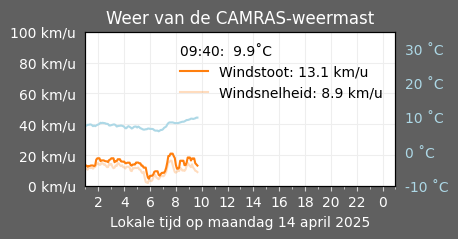
Radio waves (1) from the sun or from a certain direction of the Milky Way or from other radio sources in the universe, to which the telescope is directed, are reflected by the parabolic mirror (2) of metal mesh to the antenna in the focal point (3) of the mirror.
Radio waves captured by the antenna create a very weak voltage there, which is amplified by the frontend receiver in the focusbox (4).
By means of a special coaxial cable (5), the signal goes to the backend receiver in the control house (6) where the signal is amplified furthermore, processed and recorded as an observation.
When the radio telescope was commissioned, the observations were recorded with a strip chart recorder on long strips of paper. To understand their observations, the astronomers had to read the paper recordings with pencil and ruler accurately. They had to perform all kinds of calculations with the numbers they had read. At that time, it was still done by hand, logarithm table, slide rule and electric calculator.
Within a few years, the observations were recorded on punched paper tape. With the help of university computers, astronomers could read those tapes and automate their computations. Later, the punched tape was replaced by magnetic tape and magnetic disc.
CAMRAS now processes their measurements with computers simultaneously during the observations – so on-line – and records all observational data via the internet to their own servers in the ASTRON building.

